¶ Tips:
①To ensure its stable performance, please shake the resin well before use and keep sealed and away from light after use
②To ensure your safety, please wear gloves before use to avoid direct contact with the skin and keep the room ventilated.
③Use in well-ventilated areas, keep away from children, and avoid use in bedrooms and living rooms.
④Some individuals may be allergic to resin. If you experience such a reaction, please pause usage, seek prompt medical attention.
Follow medical advice for protection, and only resume use after taking necessary precautions.
⑤The resin is recommended to be printed in an environment with a temperature range of 25~30°C. If the actual conditions require printing in an environment,
For example, at 15~20°C, it is recommended to increase the recommended exposure time by 30% and decrease the platform lifting speed by 30%.
Before diving into Resin 3D printing, you might want to grasp some knowledge about Resin. Here, we provide a brief introduction.
¶ Resin Introduction
¶ 1.Standard Resin
Anycubic Standard Resin follows a classic formula and excels in print accuracy, hardness, and flowability while maintaining a good balance.
This resin is compatible with light sources in the range of 365-410nm.
¶ 2.Water-Wash Resin+
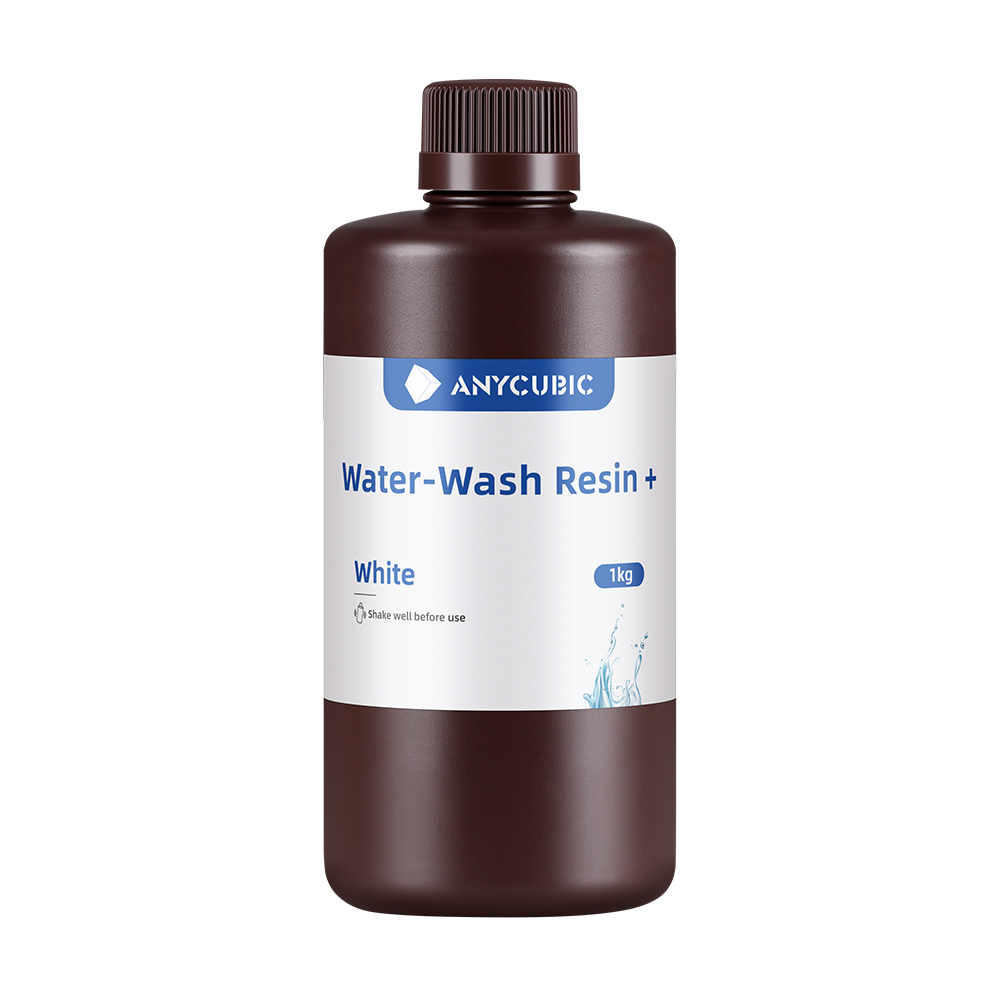
Water Wash Resin+ is formulated by adding hydrophilic components to the base resin, making it easier to clean.
Using water instead of alcohol for rinsing 3D printed parts is not only convenient and quick but also saves you time, effort, and reduces budgetary constraints.
This resin has low viscosity, requiring shorter exposure times during the printing process, thereby increasing printing speed.
In addition, Water-Wash Resin+ is compatible with light sources in the 365 405nm range, making it suitable for various applications such as anime, cultural and creative hand models, and detailed models.
Its excellent fluidity makes it an ideal choice, providing a more efficient experience for your printing projects.
¶ 3.High Speed Resin
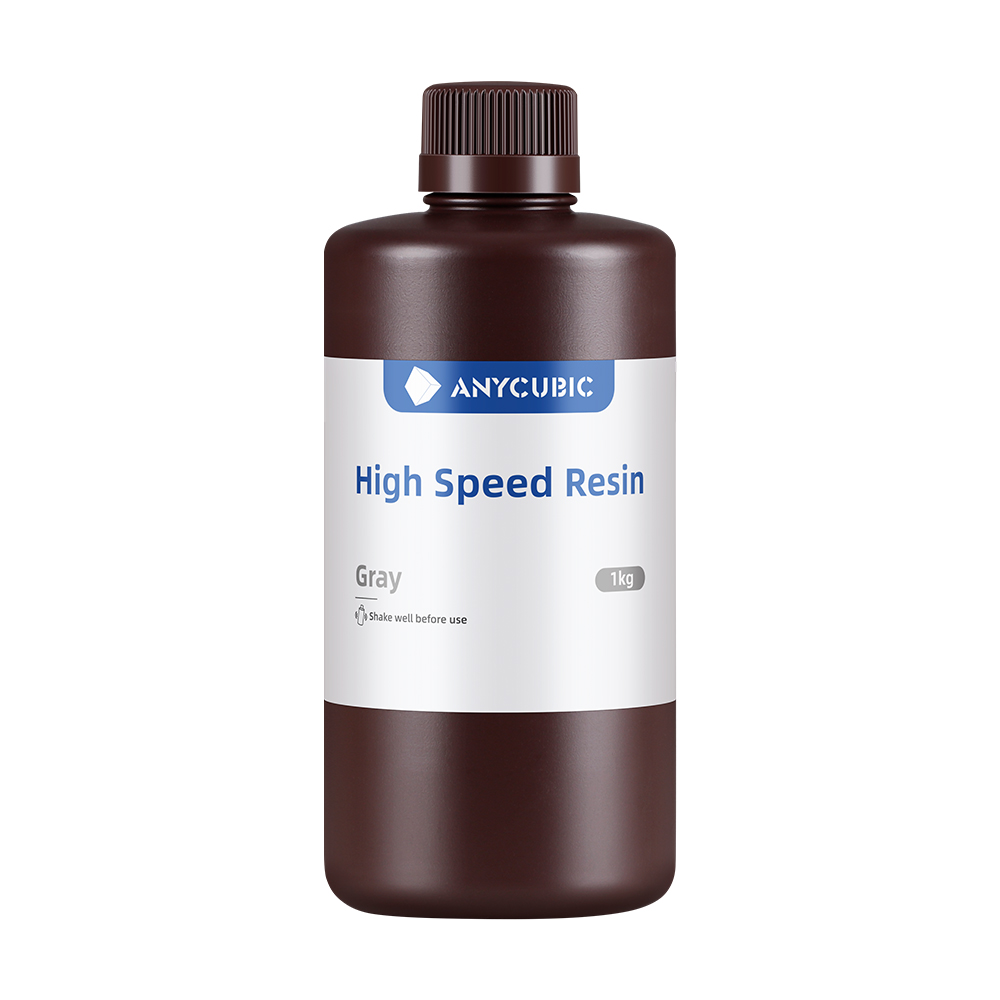
Compared to regular resin, high-speed resin has higher fluidity and lower viscosity, ensuring rapid flow to maintain printing integrity and precision, enabling fast model formation.
In summary, it is more suitable for use in high-speed printing.
¶ 4.ABS-Like Resin V2
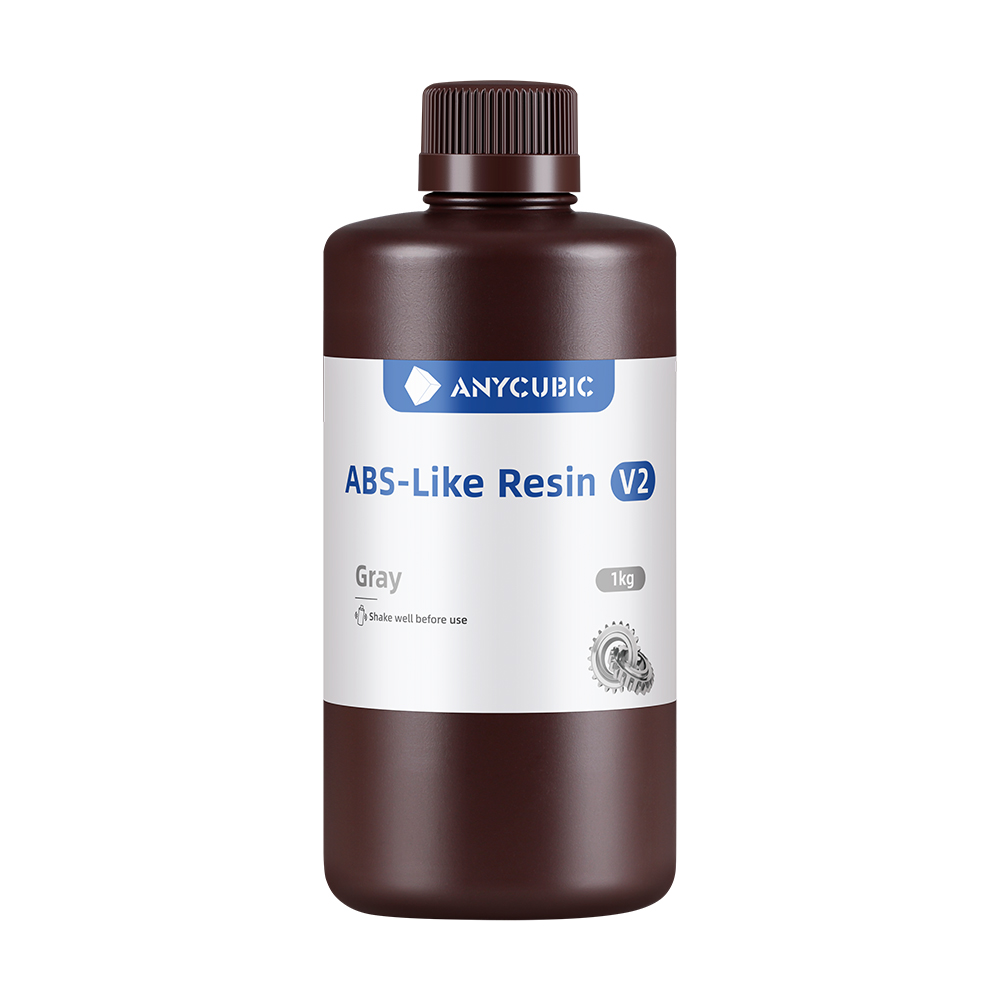
Anycubic ABS-Like Resin V2 features low viscosity, high fluidity, and easy cleaning, adapting to various cleaning methods such as water, cleaning solutions, ultrasonic cleaning, etc.
Making it suitable for a variety of scenarios. The surface of the cleaned model is non-sticky, and support structures are easier to remove, reducing the challenges of post-processing. Additionally, Anycubic ABS-Like Resin V2 is compatible with light sources in the 365-405nm range and possesses high toughness, strength, and impact resistance, making it ideal for printing structural components, tools, and other models that require high performance.
The printed models are suitable for drilling and tapping.
¶ 5.UV Tough Resin
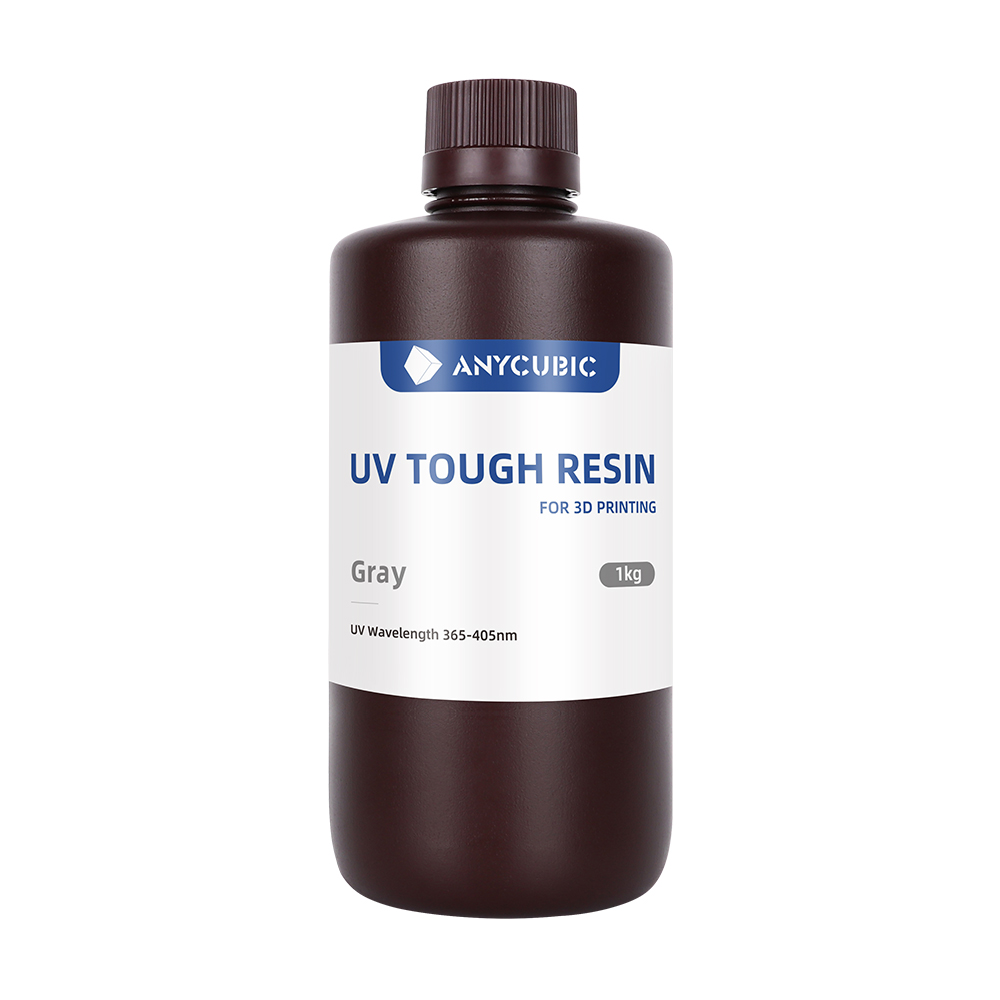
Anycubic UV Tough Resin strikes a balance between flexibility and toughness. It possesses strong resistance to compression, stretching, and bending, making it less prone to breakage.
Additionally, Anycubic UV Tough Resin is compatible with light sources in the 365-405nm range. It exhibits crack resistance, good strength, and elongation, capable of withstanding fractures, cracks, and stress marks resulting from cyclic vibrational motion.
This makes it suitable for industrial components that require repeated bending and for shock-absorbing parts.
¶ 6.Plant-based Resin+
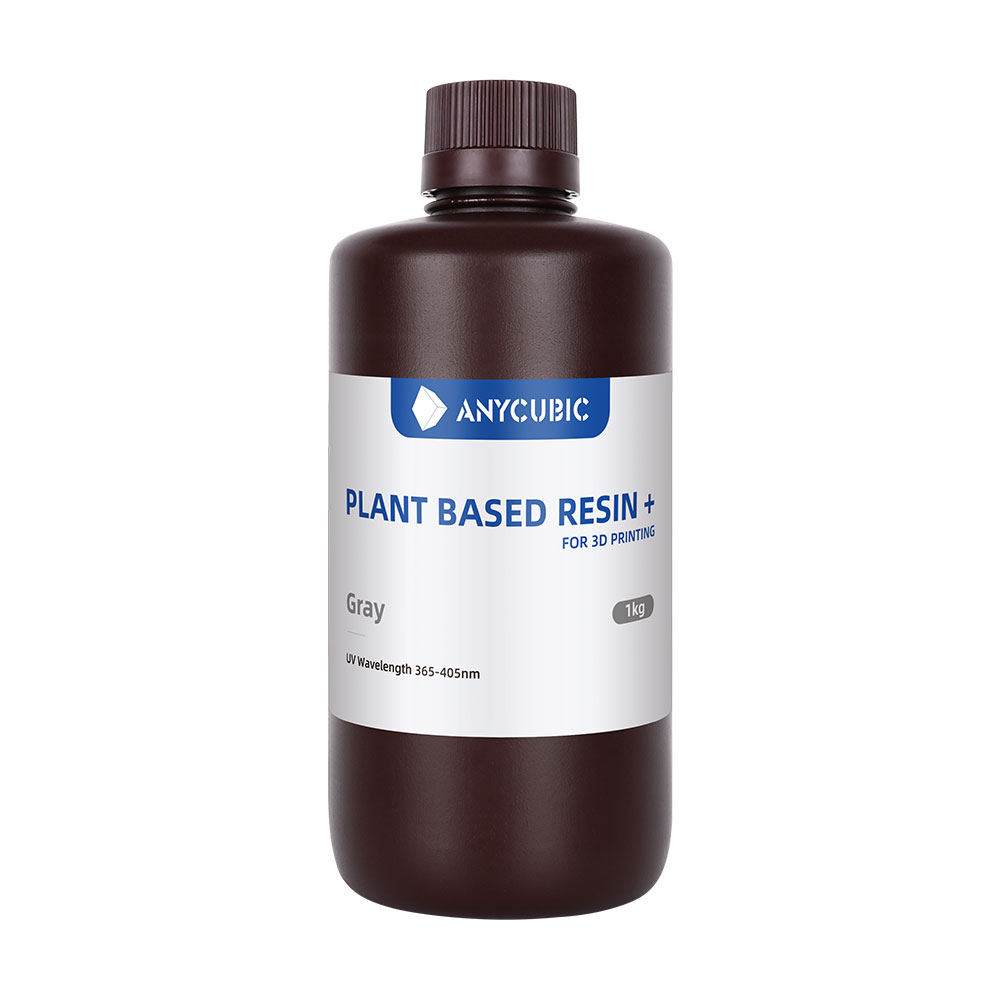
Anycubic Plant-based Resin+ utilizes an environmentally friendly formula with a light soy extract fragrance, free from bisphenol A, benzene toxins, and irritating volatile organic compounds.
It has a low odor, ensuring safe usage. Additionally, it has enhanced elasticity compared to regular plant-based resin, providing models with good resilience and strength, making them easier to shape and resistant to shocks.
¶ 7.DLP Craftsman Resin
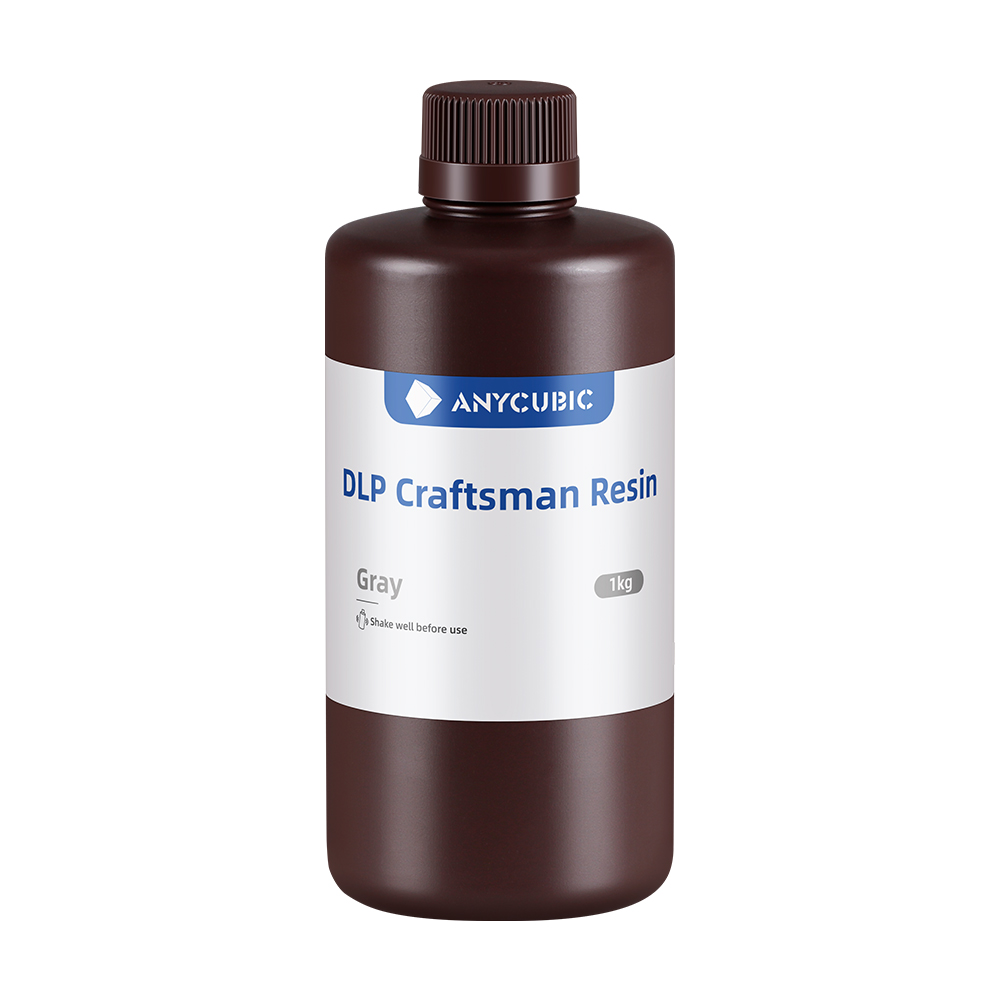
Anycubic DLP Craftsman Resin incorporates nano-scale microcrystalline ceramic powder are added, enhancing the scattering of light within the resin. This makes the resin more responsive to light, thereby improving surface fineness.
It delivers an outstanding printing experience and incredible lifelike details, making it suitable for applications that demand high performance details.
Such as animation models, jewelry prototypes, and precision parts.
¶ 8.Standard Resin+
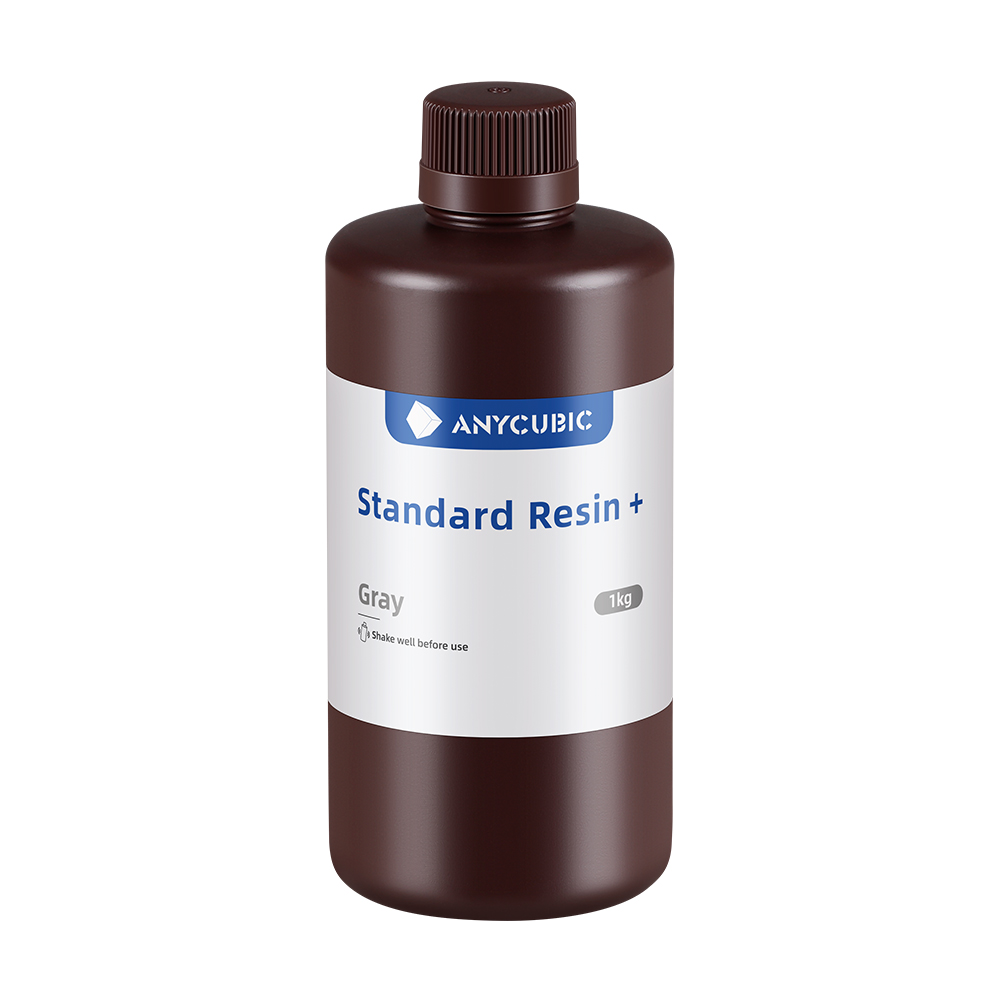
Improved Standard Resin+ introduces new components to the standard resin, significantly enhancing molding accuracy.
The accuracy range has been upgraded from the original ±0.2mm to ±0.1mm, bringing a higher level of precision to printing projects.
This resin is compatible with light sources in the 365-405nm range, providing convenience for a wide range of light source equipment.
It is suitable for various fields, including anime, cultural and creative hand models, and detailed models, offering users more delicate and accurate printing results.
¶ 9.High Clear Resin
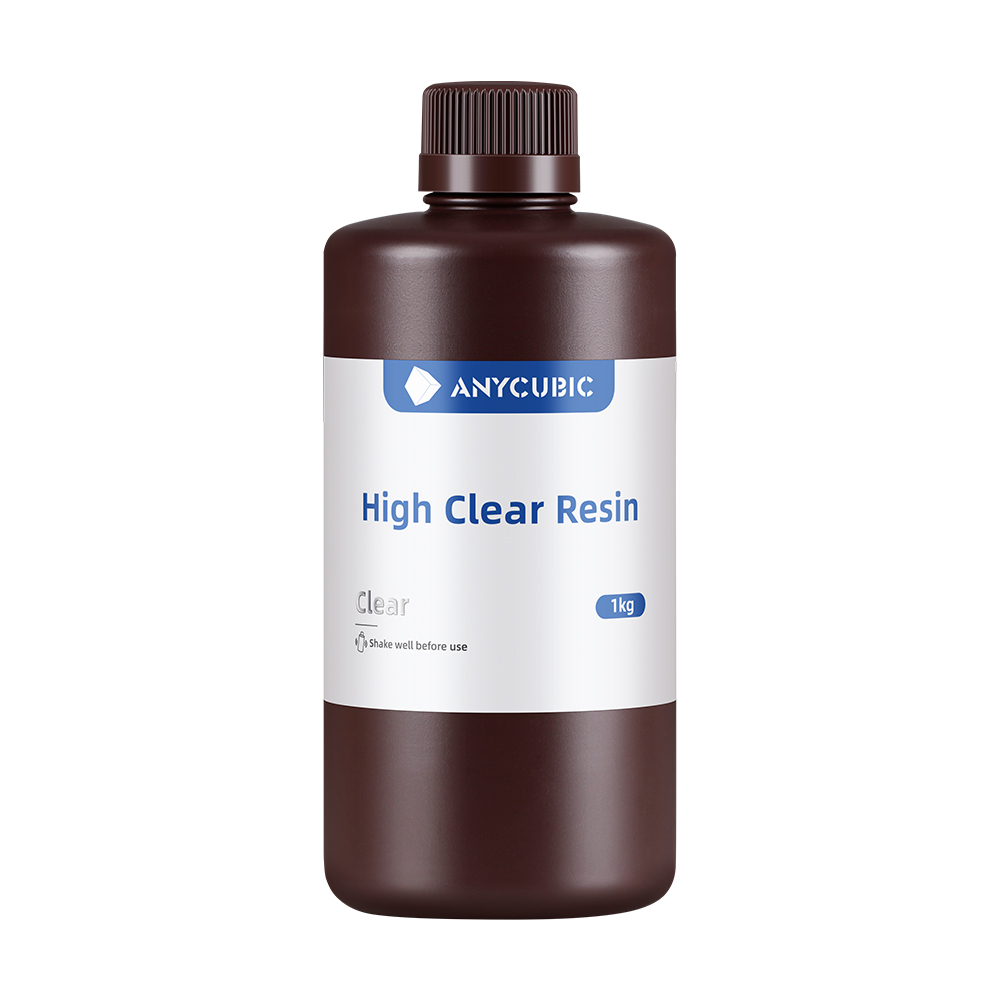
Anycubic High Clear Resin is compatible with light sources in the range of 365-405nm and can be used with most resin 3D printers, producing excellent transparent objects such as prototypes, gifts, or jewelry.
¶ Performance comparison
| Resin | UV Sensitive | Plant-based UV | UV Tough | DLP Craftsman | Water-Wash Resin+ | Standard Resin+ | ABS-Like Resin+ | ABS-Like Resin V2 | ABS-Like Pro 2 | Plant-based UV Resin+ | High Clear |
| Wavelength(nm) | 355~410 | 365~405 | 365~405 | 365~405 | 365~405 | 365~405 | 365~405 | 365~405 | 365~405nm | 365~405nm | 365~405nm |
| Density(g/cm³) | 1.05~1.25 | 1.05~1.25 | 1.10~1.15 | 1.15~1.20 | 1.15~1.20 | 1.15 | 1.05~1.25 | 1.1~1.2 | 1.05~1.25 | 1.05~1.25 | 1.05~1.25 |
| Visconsity(MPa·s 25°C) | 150-200 | 150-300 | 150-250 | 150-250 | 150-250MPa·s | 200MPa·s | 220MPa·s | 180-200MPa·s | 300~400MPa·s | 300~500MPa·s | 266MPa·s |
| Surface hardness(HD) | 82 | 84D | 76D | 82HD | 80D | 82D | 81.3D | 80-85D | 82-84D | 84D | 78HS |
| Tensile strength(MPa) | 36~45 | 36~52 | 30~45 | 35~50 | 30~45 | 35 | 32 | 40-50 | 35~40MPg | 35~55 | 28.1MPa |
| Conservation period(year) | 1 | 1 | 1 | 1.5 | 1.5 | 1.5 | 1.5 | 1.5 | 1.5 | 1.5 | 1 |
| Elongation at break(%) | 8~12 | 8~12 | 30~50 | 8~12 | 8~15 | 18 | 25 | 30~40 | 35~40 | 18~20 | 14.60 |
| Shrinkage(%) | 4.5~5.5 | 3.8~4.5 | 3.72~4.24 | 3.72~4.24 | 3.72~4.24 | 3.72~4.24 | 3.72~4.24 | 4.6~5.6 | 4.3~5.6 | 3.72~4.24 | 3.72~4.24 |
| Flexural strength(MPa) | 50~65 | 60~70 | 40~50 | 50~70 | 50~60 | 32 | 38 | 40~50 | 35~40 | 40~60 | 30.3 |
| Flexural modulus(MPa) | 1200~1600 | 1200~1600 | 800~1200 | 1200~1600 | 1500~1600 | 950 | 1150 | 1000~1200 | 1400~1800 | 1200~1400 | 798 |
| Resin wash | ALcohol | ALcohol | ALcohol | ALcohol | Water/ALcohol | ALcohol | ALcohol | Water/ALcohol | ALcohol | ALcohol | ALcohol |
| Heat deflection temp(0.45MPa) | 65~70°C | 60~65°C | 50~55°C | 65~70°C | 60~65°C | 60~65°C | 60~65°C | 60~65°C | 60~65°C | 80°C | 60~65°C |
¶ Radar Chart
¶ Precautions before Use
① Shake the resin bottle/pack before use to ensure thorough mixing of the resin.
② Check if there are obvious wrinkles/damage on the resin vat release film. If so, replace the release film before use.
③ Inspect the LCD screen for any visible dirt/excess solid residue. Clean the screen thoroughly before starting the print.
④ If the resin has not been used in the 3D printer for more than 3 days, it is recommended to stir the resin in the vat, filter it through a funnel, and then pour it into the resin container.
¶ Storage Method
The storage method of 3D printing resin is crucial to maintaining its performance and quality. Here are some recommended storage methods:
¶ Avoid Direct Sunlight:
Store the resin in a cool, dry place away from direct sunlight. Ultraviolet light can have a negative impact on the resin, leading to curing or performance degradation.
¶ Sealed Container:
Maintain the resin's seal by using a dedicated, airtight container. Moisture and oxygen in the air can potentially affect the resin.
¶ Temperature Control:
Resin storage temperature is typically recommended within a certain range to avoid excessively high or low temperatures. Most resins perform best within a temperature range of 5-28 degrees Celsius.
Please note that this is not the optimal printing temperature for resin.
¶ Avoid Chemicals:
Avoid storing resin near chemicals that may release harmful gases. Some chemicals may react with the resin, affecting its performance.
¶ Follow Manufacturer's Recommended Expiry:
Resins usually have a specified shelf life. Before use, check the expiration date on the resin container, and use it before the indicated date.
¶ Regular Stirring:
Some resins may experience layering or settling during storage. Before use, regularly stir or shake the resin container to ensure uniform mixing.
¶ Dust Prevention:
When using resin, keep the workspace clean to prevent dust, impurities, or other foreign objects from entering the resin.